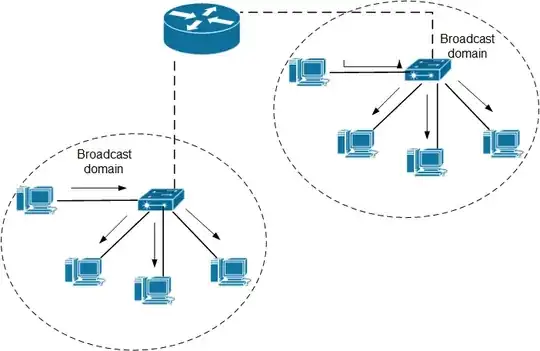Switches are transparent devices. Switches, themselves, don't broadcast anything. A switch will flood unknown unicast frames, and broadcast or (possibly) multicast frames will be sent to all switch interfaces, but switches do not originate traffic, nor do they care anything about layer-3 protocols, e.g. IP, so a switch doesn't know about IP addresses, much less broadcast them.
Each device on a network has its own addresses, and each knows what the local network is based on its configured network mask.
Based on your edit:
The Linksys router, and all consumer-grade devices, are explicitly off-topic here.
DHCP requests are broadcast from the hosts to the network, so DHCP requests will go to all switch interfaces, including the switch interface of your DHCP server (possibly running in your router chassis). The DHCP server will respond to the requesting host with the necessary information (IP address, mask, gateway address, etc.).
